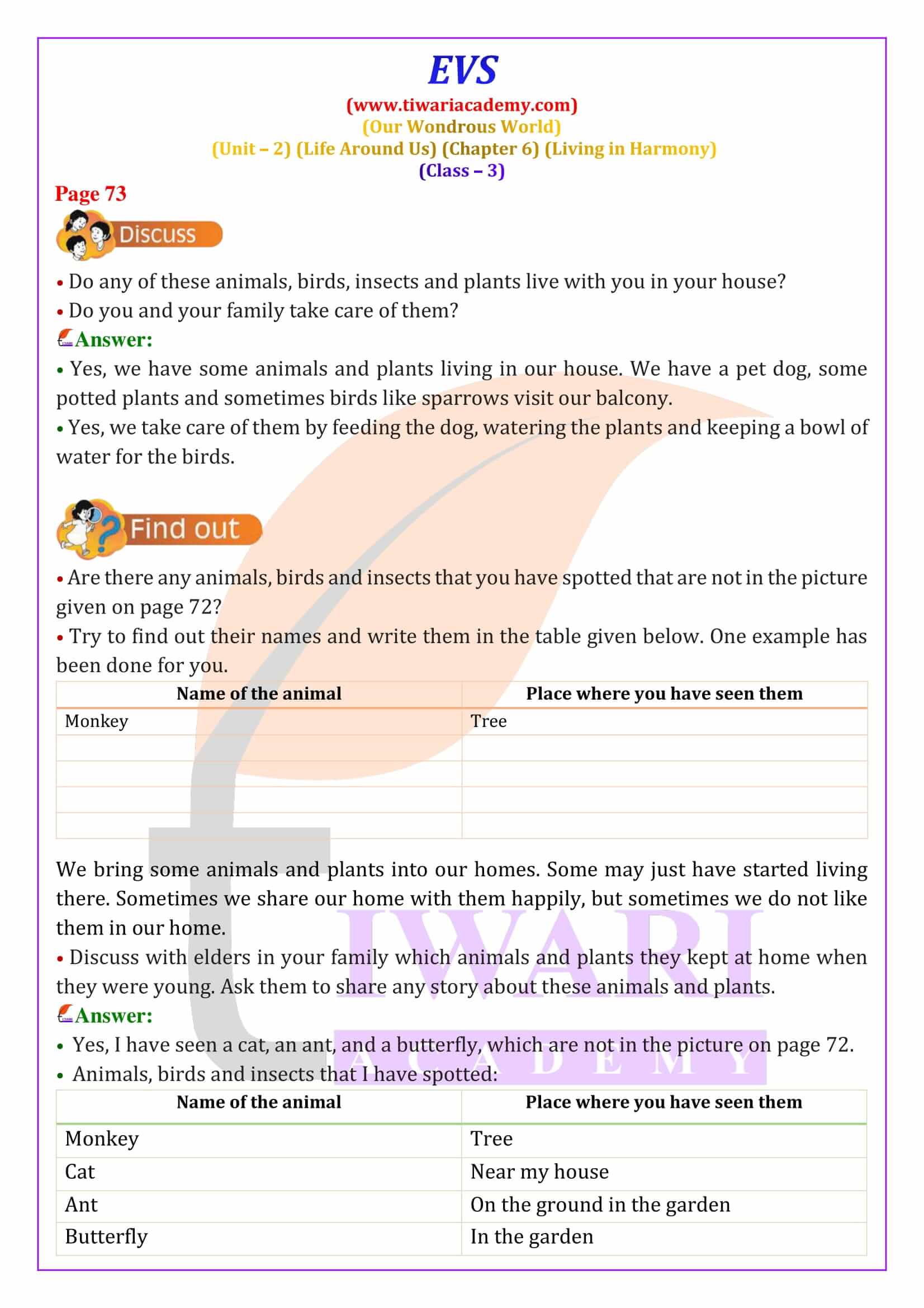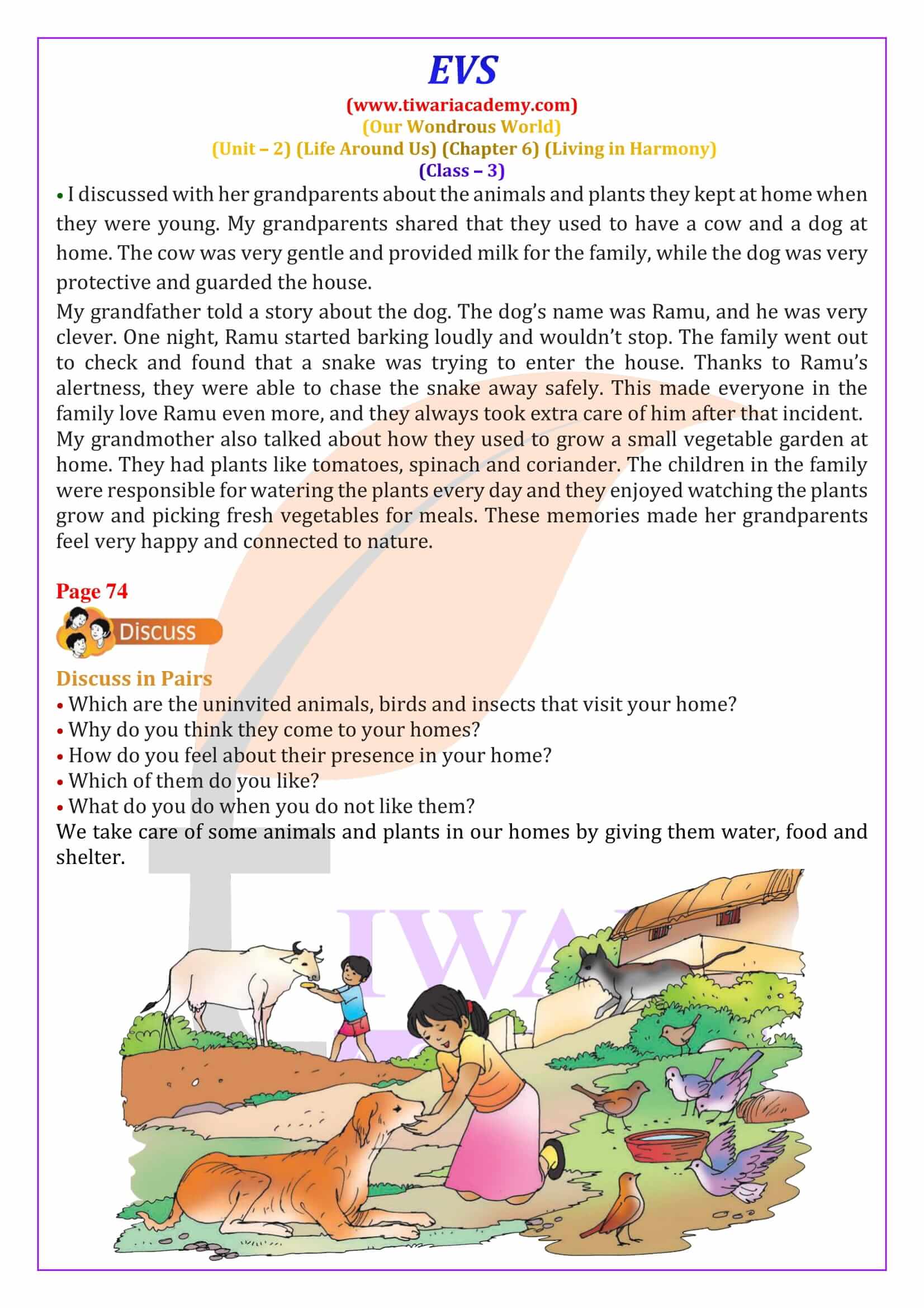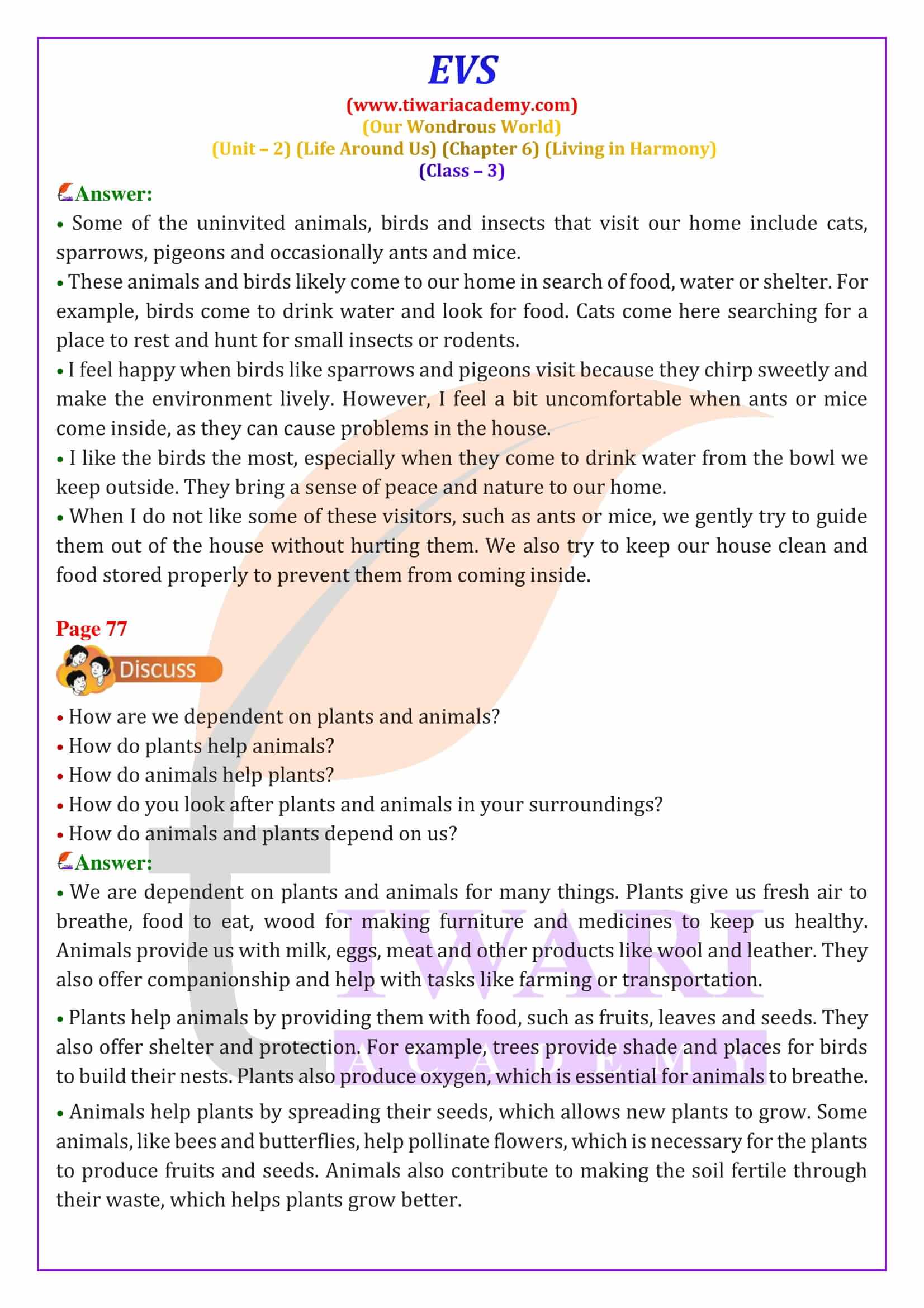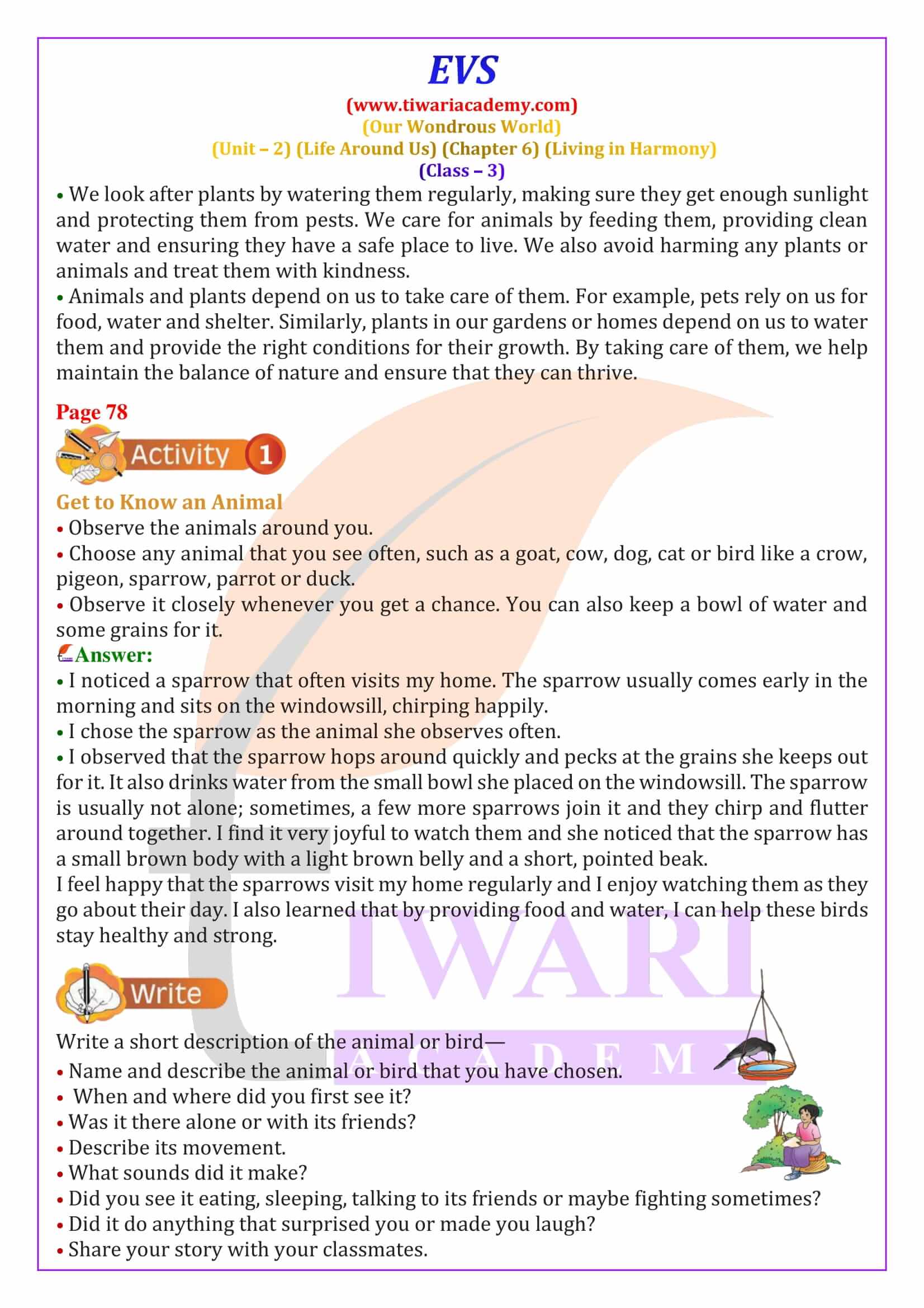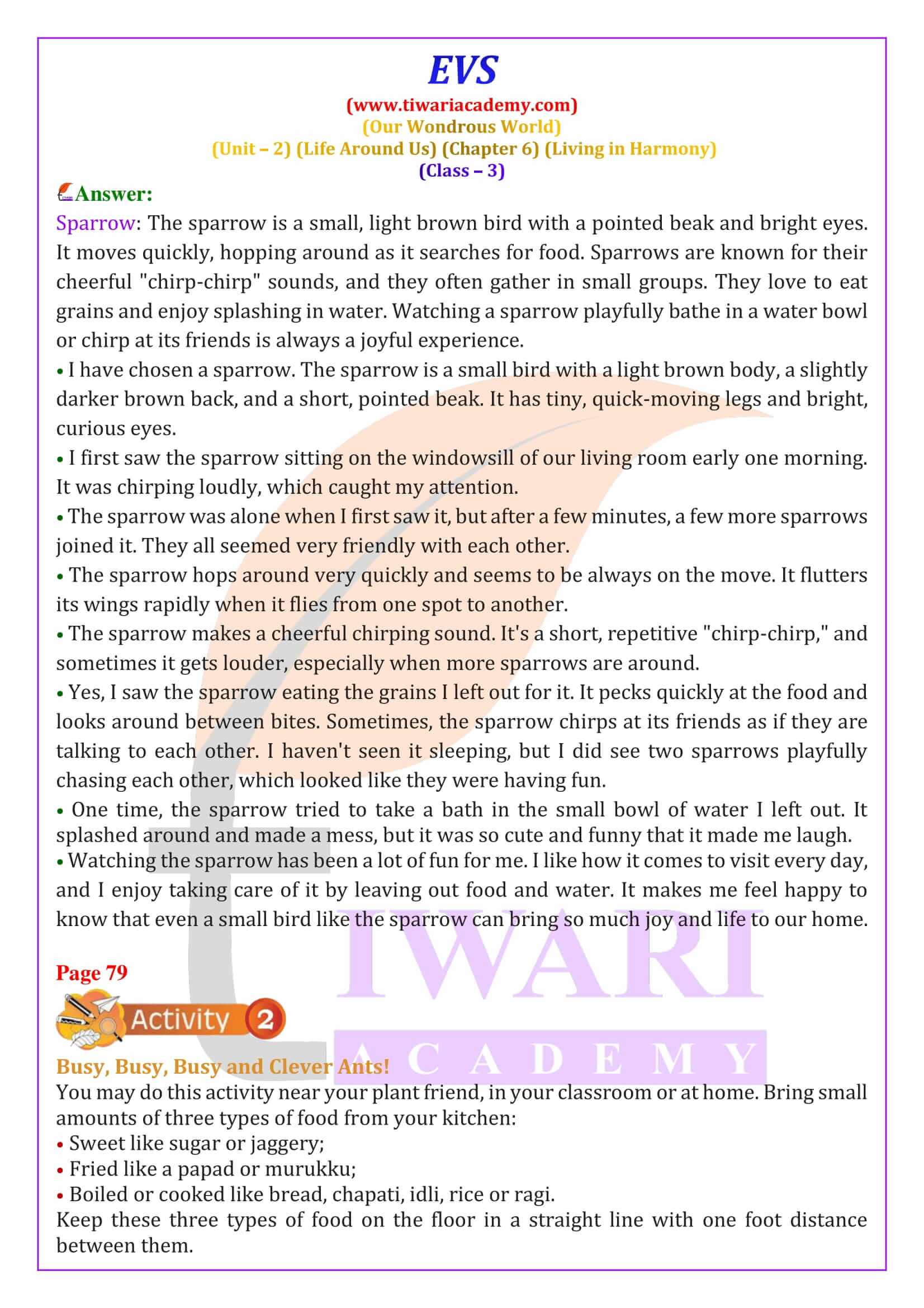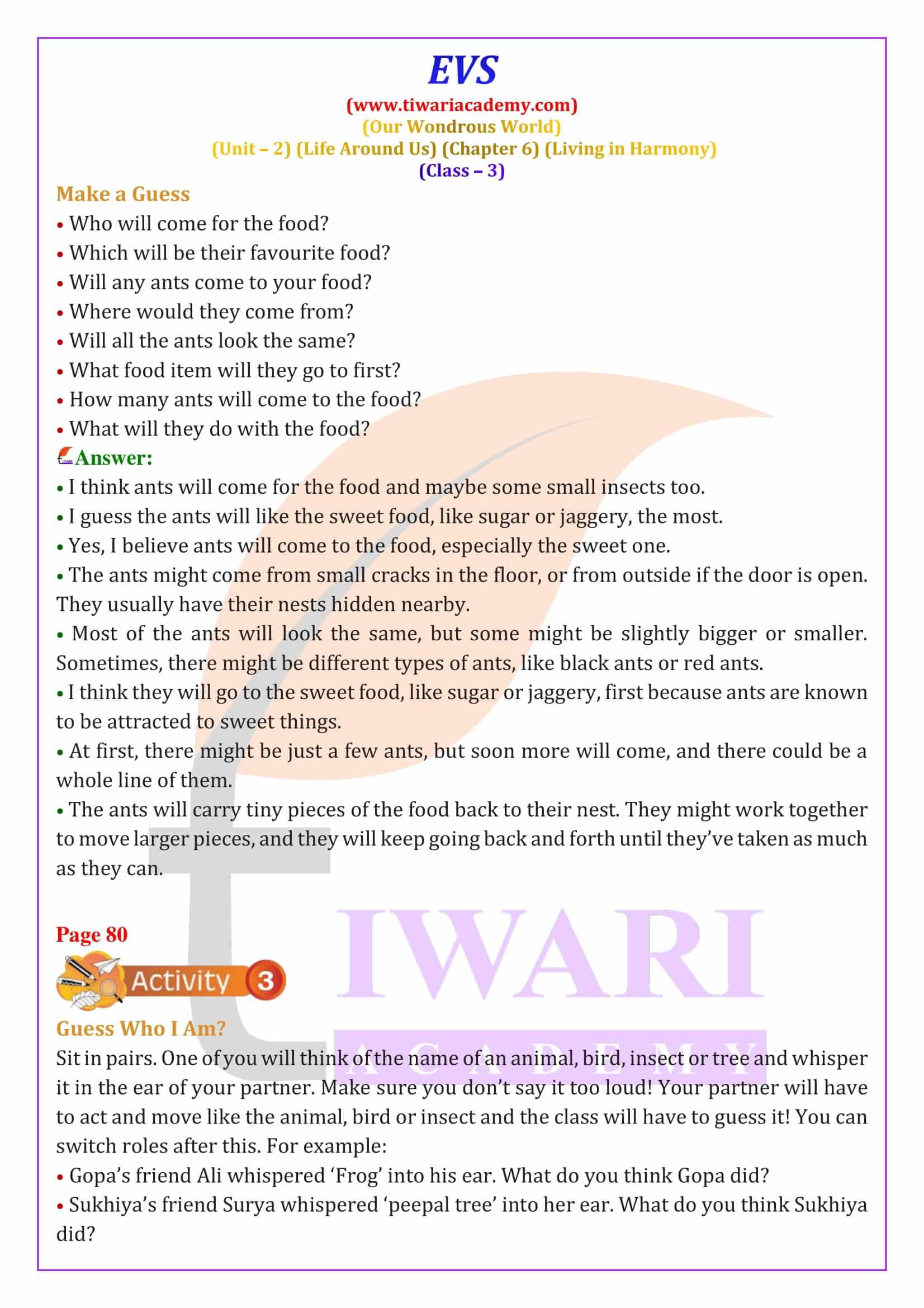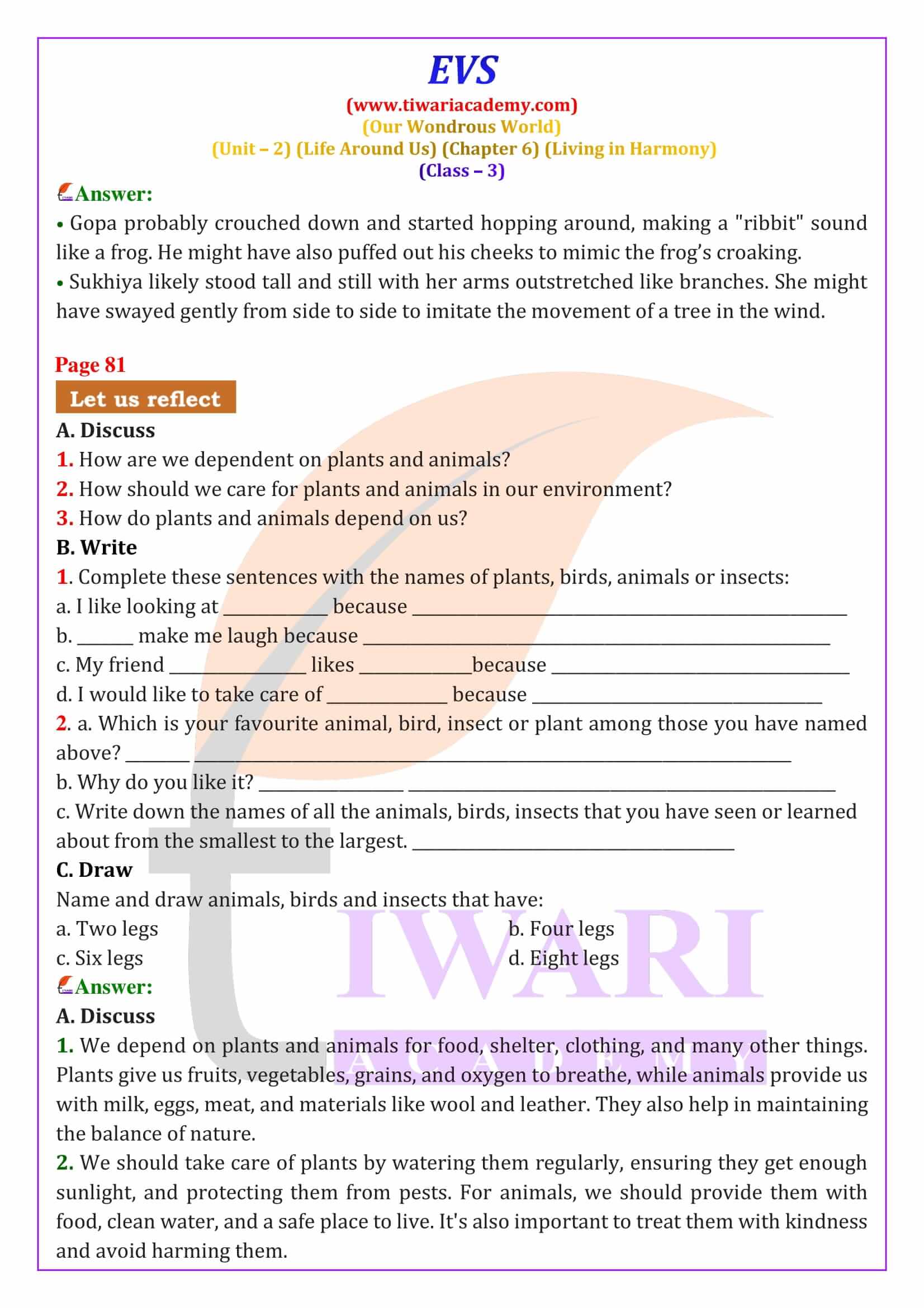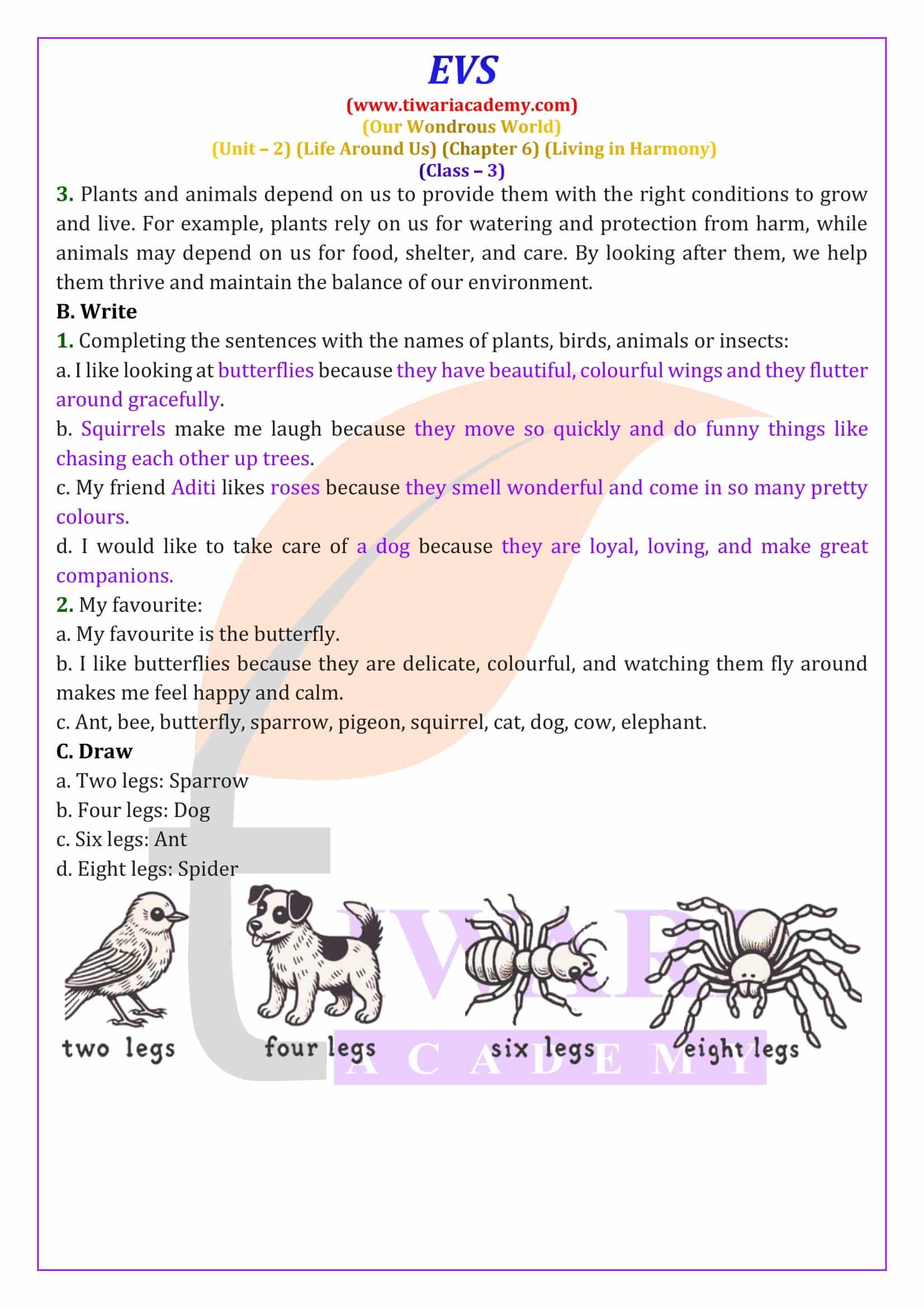NCERT Solutions for Class 3 EVS Chapter 6 Living in Harmony based on the Our Wondrous World textbook modified for the session 2025-26. It emphasises the significance of living harmoniously with nature and others. Class 3 EVS Chapter 6 covers concepts of cooperation, empathy and environmental conservation, encouraging students to adopt peaceful and eco-friendly practices.
Class 3 EVS Chapter 6 Living in Harmony Question Answers
Introduction to Harmony in Nature
In Chapter 6, Living in Harmony, students learn about the beautiful relationships between animals, plants, and humans. The chapter begins by encouraging children to observe the animals, birds, insects, and plants around them, especially those that might live in or around their homes. It teaches that some creatures come into our homes uninvited, while others are welcomed, and we often share our space with them. This chapter aims to help students understand how different living beings coexist and depend on each other, fostering a sense of care and responsibility towards nature.
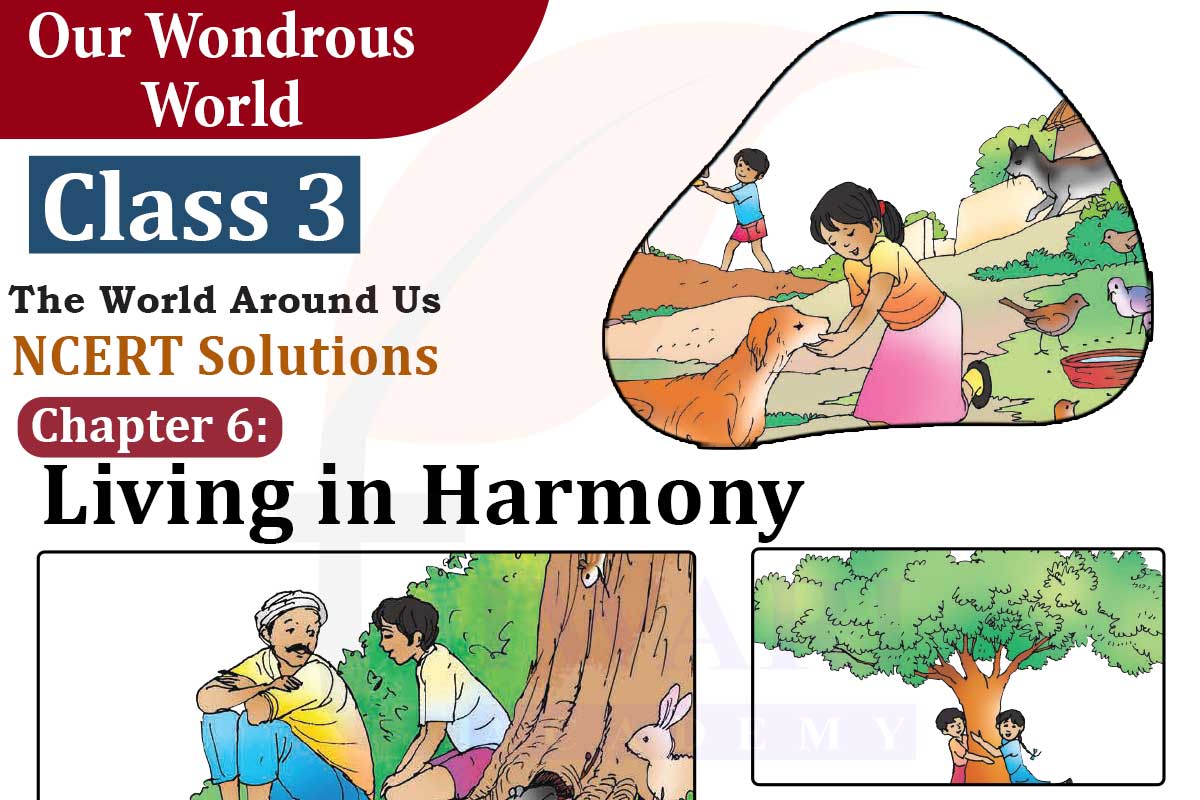
Sharing Our Space with Animals and Plants
The chapter 6 discusses how humans share their homes with animals and plants. Students are prompted to think about how their families take care of these living beings, whether it is by feeding birds, watering plants, or simply enjoying their presence. It also highlights that while we may sometimes feel annoyed by uninvited guests like insects, it’s important to treat them with kindness. This section encourages children to respect all forms of life, emphasizing that animals usually do not harm us unless they feel threatened.
The Mango Tree Story
A delightful story about a boy named Shambhu is shared in the chapter. Shambhu, while sitting under a mango tree with his father, observes how the tree is a home for many creatures, including birds, squirrels and monkeys. Through this story, students learn how animals help in the growth of new plants by spreading seeds, like when the monkey throws a mango seed, which can later grow into a new tree. This story illustrates the interdependence between plants and animals and how they help each other in nature.
The Benefits We Receive from Plants and Animals
The chapter also focuses on how humans depend on plants and animals. From plants, we get food, medicines and materials for clothing and shelter. Animals provide us with food, like milk from cows and goats and companionship, as seen with pets. The chapter encourages students to reflect on how they benefit from nature and to think about ways they can give back by caring for the plants and animals in their surroundings.
Caring for Our Environment
Students are encouraged to discuss and reflect on how they can care for plants and animals. The chapter suggests simple actions like watering plants, feeding animals and creating safe habitats for them. It emphasizes that just as plants and animals provide us with many resources, we too must take responsibility for their well-being. By nurturing the environment, students can contribute to a harmonious relationship with nature.
Activity: Observing and Describing Animals
One of the activities in the chapter asks students to closely observe an animal or bird they see often. They are guided to note its behavior, sounds, and interactions and then share their observations with the class. This activity helps students develop a deeper connection with the animals around them and understand their unique characteristics. It also teaches them to appreciate the diversity of life in their environment.
Reflection of the Chapter 6
The chapter ends by asking students to reflect on the lessons they’ve learned about living in harmony with nature. They are encouraged to think about how they depend on plants and animals and how these living beings depend on them. Through discussions and activities, students learn that caring for the environment is a shared responsibility that leads to a more balanced and peaceful world.
For a detailed understanding and well-explained solutions to all the questions in Chapter 6, students can visit Tiwari Academy, where simplified answers and explanations are available.
